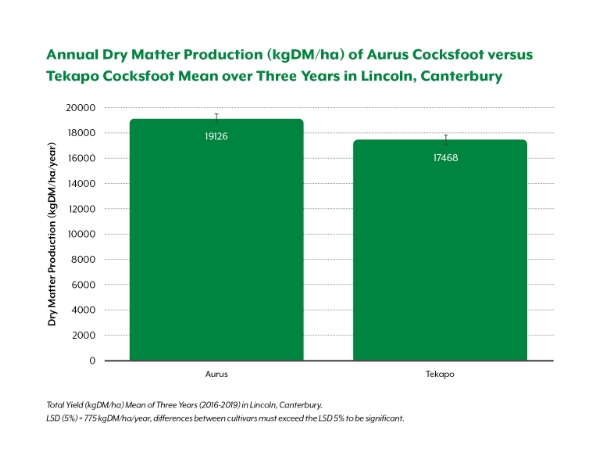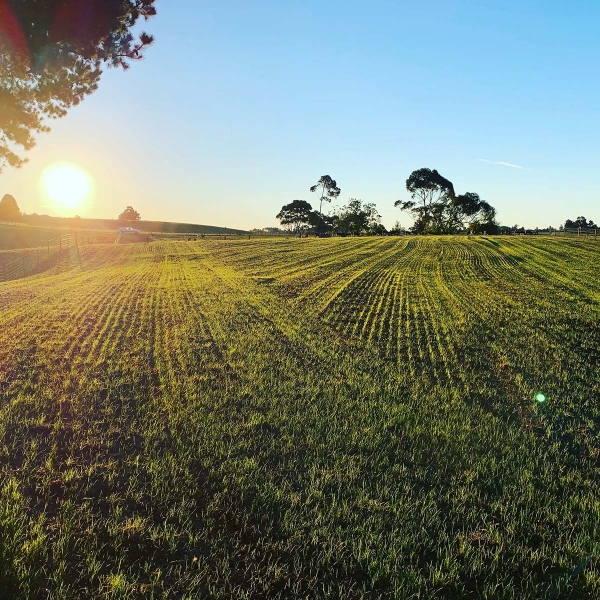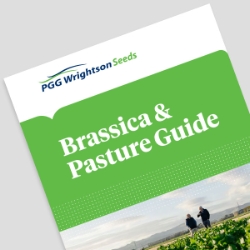Aurus
Cocksfoot

- High yielding variety with improved winter activity over Tekapo cocksfoot
- High persistence
- Upright growth habit
- Excellent drought tolerance
- Suitable for set-stocking and hard rotational grazing by sheep
- Excellent Drechslera tolerance observed in New Zealand trials
Aurus is an upright cocksfoot providing strong summer production and persistence well suited to challenging dryland environments. Breeders and agronomists have selected Aurus for superior yield, strong disease tolerance and a later heading date (+6 days later than Tekapo cocksfoot).
Sowing and Establishment
Pure swards of Aurus cocksfoot are suited to summer dry environments and should be sown at rates of 6-10 kg/ha (Superstrike® treated) with appropriate clovers and herbs. White clovers including Hilltop (small leaf white clover) or Quartz (medium leaf white clover) along with Puna II chicory are well suited to mixed pasture swards with Aurus cocksfoot.
In a perennial ryegrass pasture, Aurus can be included to improve summer production and persistence at rates of 2-3 kg/ha. Alternatively, a cocksfoot dominated ryegrass pasture mix with sowing rates from 3-10 kg/ha is ideal for farm systems where cocksfoot is the desired dominant species.
Due to slower establishment, cocksfoot pastures should be sown Superstrike treated in early autumn or spring to ensure a rapid uniform establishment.
Grazing Management
Due to its slower establishment, early grazings of Aurus cocksfoot and ryegrass mixes should be frequent and light, using large mobs to reduce competition from the ryegrass.
Example pasture mixes
Dryland Cocksfoot Dominant Mix
Aurus cocksfoot 10 kg/ha
Hilltop white clover 4 kg/ha
Bindoon sub clover 6 kg/ha
High Fertility Cocksfoot Dominant Mix
Aurus cocksfoot 10 kg/ha
Quartz white clover 2 kg/ha
Hilltop white clover 2 kg/ha
For increased animal performance, nitrogen fixation and pasture management, add Amigain red clover to pasture mixes at 4-6 kg/ha.

Cocksfoot has long been recognised for its agronomic attributes in dryland farming situations. Relative to ryegrass, it has an ability to cope with summer dry conditions, and tolerate grazing by key pasture pests such as Grass Grub and Porina.






